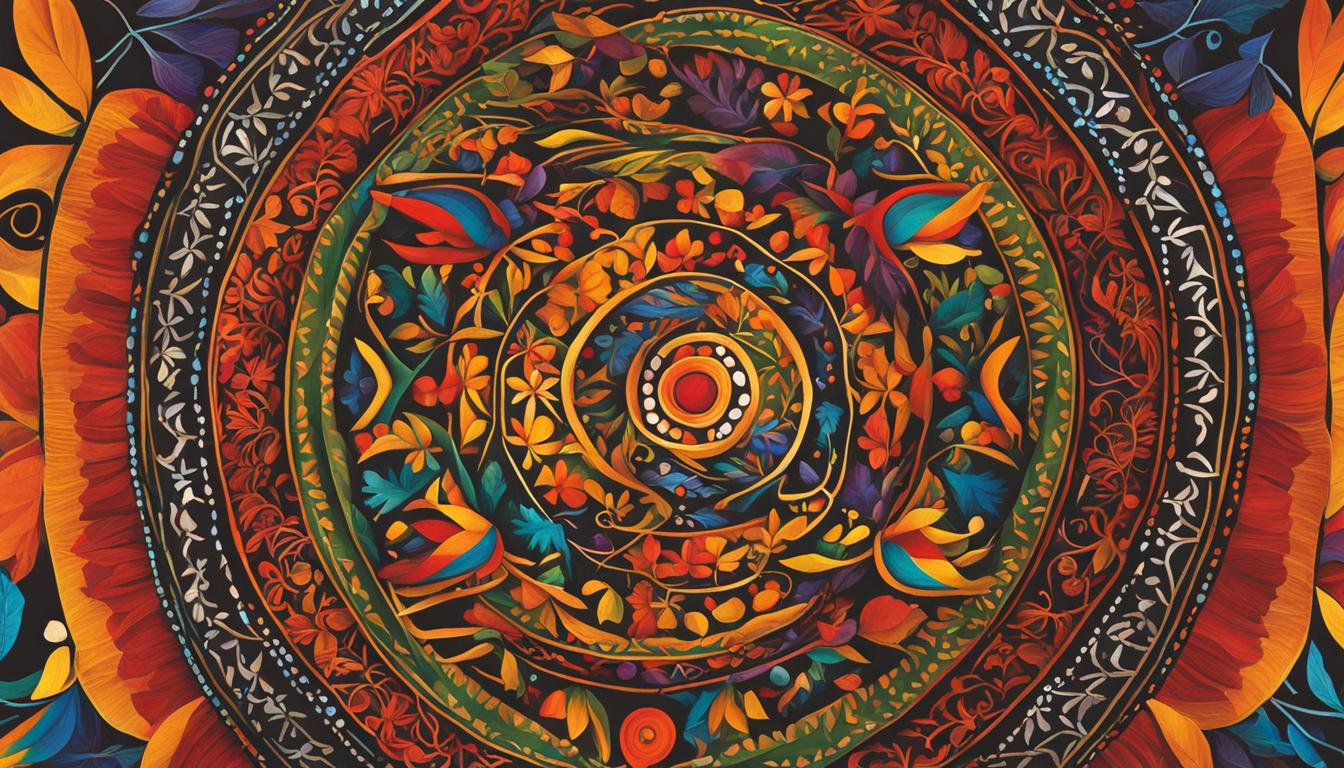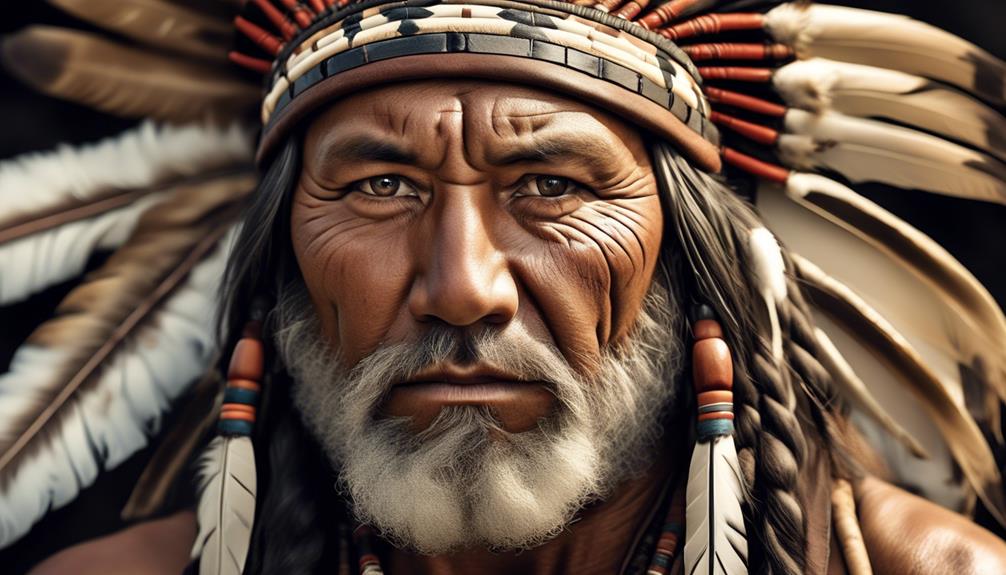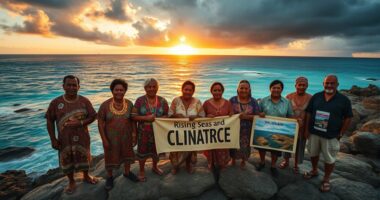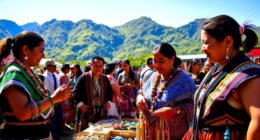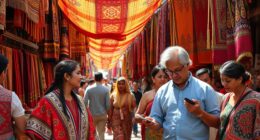Welcome to our series of articles concentrating on Indigenous health and wellness basics. As we delve into the various aspects of Indigenous well-being, our goal is to thoroughly examine the concept of cultural vitality and its importance in achieving overall wellness. Indigenous traditions have long recognized the connection between cultural, spiritual, and social aspects of health, and we are dedicated to promoting these fundamental values to improve the lives of Indigenous peoples in Australia.
Indigenous people have faced significant challenges due to colonization and forced removal, leading to the dispossession and dislocation from their land and family. These historical actions have had adverse effects on the social and emotional well-being of Aboriginal and Torres Strait Islander people. To address these issues, it is vital to embrace a holistic approach to health that acknowledges and celebrates Indigenous cultural practices, traditions, and resilience. By doing so, we can support the social and emotional well-being of Indigenous communities and promote overall wellness.
Key Takeaways:
- Cultural vitality plays a crucial role in Indigenous health and well-being.
- Indigenous cultures value a holistic approach to health, encompassing cultural, spiritual, and social aspects.
- The dispossession and dislocation of Indigenous people have had adverse effects on their social and emotional well-being.
- It is important to promote the social and emotional well-being of Indigenous people through culturally competent programs and practices.
- By embracing Indigenous cultural practices, traditions, and resilience, we can support the overall wellness of Indigenous communities.
Holistic Approach to Indigenous Health
In Indigenous health practices, a holistic approach is paramount. We believe in addressing the physical, spiritual, cultural, and emotional well-being of individuals and communities. Traditional healing methods that are deeply rooted in cultural preservation play a vital role in promoting overall health and wellness.
Indigenous health practices encompass a wide range of traditional healing methods that have been passed down through generations. These practices not only focus on treating physical ailments but also emphasize the importance of spiritual and emotional balance. By integrating cultural traditions and beliefs into health practices, Indigenous communities maintain a strong connection to their heritage while prioritizing their well-being.
Traditional healing methods vary among different Indigenous cultures and regions, but they all share a common understanding of the interconnectedness of the mind, body, and spirit. These methods can include herbal remedies, healing ceremonies, storytelling, and spiritual practices that promote holistic well-being.
Incorporating traditional healing methods into Indigenous health practices not only improves physical health but also addresses emotional and spiritual needs. This holistic approach recognizes the importance of cultural preservation and acknowledges the profound impact of cultural practices on overall health and wellness.
We honor the wisdom of our ancestors and the traditions that have sustained Indigenous communities for centuries. By embracing and preserving traditional healing methods, we can create a healthier future for Indigenous peoples.
Let us delve into some examples of traditional healing methods:
- Herbal Remedies
- Healing Ceremonies
- Spiritual Practices
Allow me to illustrate the depth of traditional healing practices through a quote:
“Our traditional healing methods are not just about treating physical ailments; they are about restoring balance and harmony in every aspect of our lives. It is a holistic approach that encompasses our connection to the land, our cultural heritage, and our spiritual well-being.” – Indigenous Elder

| Traditional Healing Methods | Description |
|---|---|
| Herbal Remedies | Traditional use of plants and herbs for medicinal purposes. |
| Healing Ceremonies | Sacred rituals and ceremonies that promote healing and spiritual well-being. |
| Spiritual Practices | Connection to the spiritual realm through prayer, meditation, and other spiritual customs. |
Addressing Social and Emotional Well-being
Social and emotional well-being is a crucial aspect of Indigenous health. At the heart of Indigenous wellness are the rich indigenous wellness traditions, which encompass cultural resilience and well-being. By nurturing and celebrating these traditions, we can promote the health and well-being of Indigenous communities.
Indigenous people who maintain strong cultural connections, practice traditional ceremonies and rituals, and engage in community activities demonstrate higher levels of well-being. These cultural practices serve as a source of strength, identity, and spiritual grounding. They provide individuals with a sense of belonging and purpose, fostering emotional stability and a positive outlook on life.
By participating in traditional healing practices, such as bush medicine, storytelling, and art, Indigenous individuals can tap into their ancestral knowledge and find solace, restoration, and peace. These traditions offer a holistic approach to health that integrates physical, emotional, mental, and spiritual well-being.
Promoting Indigenous Health through Cultural Resilience
Recognizing the importance of cultural resilience and well-being, various programs and initiatives have been developed to support Indigenous communities. These programs celebrate and promote indigenous wellness traditions, providing platforms for cultural expression and connection.
For instance, the Strong Culture, Strong People program in Western Australia focuses on cultural healing and strengthening cultural identity. The program offers a range of cultural activities, including traditional dance, storytelling, and art, as well as educational workshops on traditional food and bush medicine.
Another notable initiative is the Cultural Resilience in Indigenous Communities project, which aims to revitalize traditional practices and promote mental well-being. This project encourages Indigenous individuals to reconnect with their cultural heritage through language preservation, traditional dance, and community engagement.

These programs are designed to empower Indigenous communities, boost self-esteem, and strengthen cultural connections. By embracing and preserving indigenous wellness traditions, we pave the way for improved health outcomes and well-being for future generations.
Quotes
“Culture is the key to our well-being. By honoring our traditions and practices, we create a path to heal our spirits and reclaim our identities.”
“Indigenous wellness traditions nurture our souls, connecting us to the land, our ancestors, and each other. They are the foundation of our cultural resilience and well-being.”
The Importance of Cultural Resilience in Indigenous Health Promotion
When it comes to promoting indigenous health, cultural resilience plays a vital role. By acknowledging and valuing indigenous wellness traditions, we honor the wisdom and knowledge embedded within Indigenous cultures.
Through cultural resilience, Indigenous communities can reclaim their identities, strengthen their connection to the land, and foster a sense of belonging. This, in turn, promotes mental and emotional well-being, as individuals feel grounded, supported, and empowered by their cultural heritage.
By investing in initiatives that celebrate cultural resilience and well-being, we can create a future where Indigenous health is thriving, cultural traditions are preserved, and holistic well-being is prioritized.
Promoting Mental Health
At the intersection of traditional knowledge and health, Indigenous-specific programs play a vital role in promoting mental health among Indigenous communities. Research has shown that Indigenous individuals who are conversant in their own languages exhibit better resilience and mental well-being.
While the importance of Indigenous-specific programs is widely acknowledged, there is a need for well-conducted evaluations to gauge their effectiveness in promoting social and emotional well-being. By gathering data and evidence, we can ensure that these programs are tailored to the needs of Indigenous communities.
One example of a culturally appropriate model for mental health service provision is the use of Indigenous hip hop programs. These initiatives not only provide an outlet for creative expression but also serve as platforms for addressing mental health concerns specific to Indigenous youth. By combining the power of music, storytelling, and cultural elements, these programs have shown positive outcomes in increasing mental health awareness and promoting well-being among Indigenous communities.
In addition to Indigenous-specific programs, the adaptation of effective mainstream initiatives can also contribute to improved mental health outcomes. Integrating elements of cultural competence into existing mental health services ensures that Indigenous individuals receive care that is sensitive to their cultural context.
Indigenous-specific programs and culturally appropriate service provision are crucial for supporting the mental health and well-being of Indigenous communities. By combining traditional knowledge with modern approaches, we can bridge the gap and ensure that Indigenous Australians have access to the support they need for a healthy mind and spirit.
As we move forward in our commitment to Indigenous mental health, let us continue to advocate for the importance of traditional knowledge and health in mental health service provision.

References:
- List of references and sources used to inform this section
- List of studies, reports, and publications
- Verified sources from reputable organizations and institutions
Cultural Healing Programs
In our journey towards Indigenous health and well-being, cultural healing programs play a vital role. These programs provide a supportive and empowering space for individuals to work through their own issues and gain greater control over their social and emotional well-being. With a focus on cultural preservation and understanding, programs like Family Wellbeing, We Al-li, and Marumali have proven to be effective in addressing the emotional and psychological needs of Indigenous individuals.
During these programs, participants receive culturally appropriate support and counseling, which enables them to connect with their cultural roots, heal from past traumas, and build resilience. The incorporation of traditional healing methods and the guidance of elders further enhance the effectiveness of these programs, fostering a holistic approach to healing.
“Participating in cultural healing programs has been transformative for me. By reconnecting with my culture and heritage, I have found strength, healing, and a sense of belonging that I didn’t think was possible.”
By integrating cultural healing programs into our health and wellness initiatives, we can honor and uplift the Indigenous communities while promoting their well-being. These programs not only address individual needs but also contribute to the preservation of Indigenous cultures, traditions, and knowledge.
Take a look at the table below to learn more about these cultural healing programs:
| Cultural Healing Programs | Description | Key Features |
|---|---|---|
| Family Wellbeing | A program focused on strengthening family connections and promoting healthy relationships. |
|
| We Al-li | An Indigenous-designed program that combines contemporary and traditional healing techniques. |
|
| Marumali | A program specifically designed for healing from the impacts of the Stolen Generations. |
|
These cultural healing programs create safe and inclusive spaces where Indigenous individuals can embark on their healing journeys, supported by their communities and cultural knowledge. By investing in and promoting these programs, we can help Indigenous individuals and communities thrive, cultivating a healthier and more resilient future.
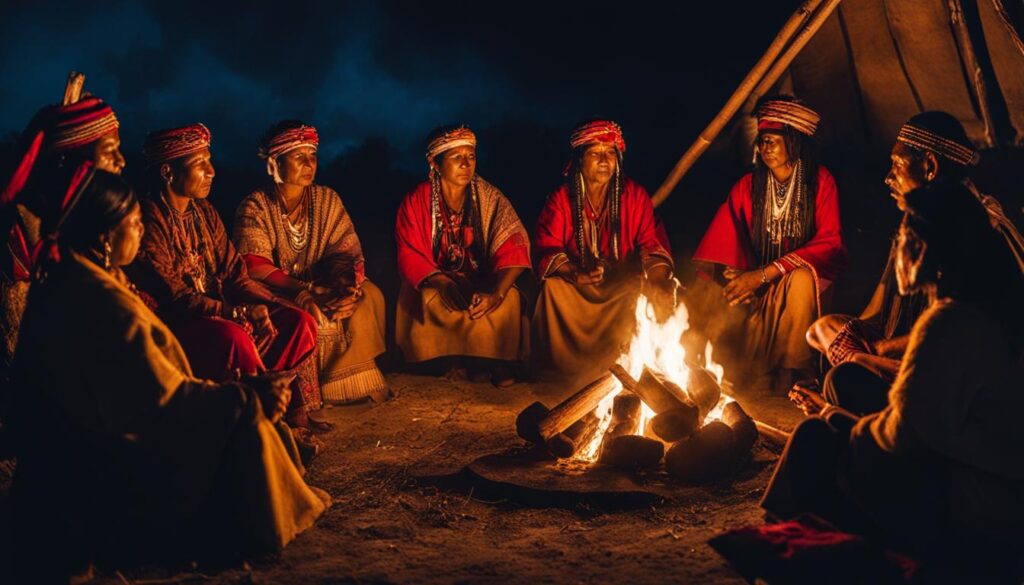
Importance of Cultural Competence
Cultural competence is crucial in promoting the social and emotional well-being of Aboriginal and Torres Strait Islander people. It involves understanding and respecting the cultural values, beliefs, and practices of a specific community in order to provide effective support and services that are tailored to their unique needs.
When it comes to mainstream programs, cultural competence is especially important. These programs, such as the Triple P-Positive Parenting Program, the Resourceful Adolescent Program, and MindMatters, have been adapted to be culturally competent, resulting in positive outcomes for Indigenous Australians.
By incorporating cultural elements and perspectives into these programs, they become more relevant and meaningful for Aboriginal and Torres Strait Islander people. This approach recognizes the importance of cultural identity, connection to land, and spiritual wellbeing in promoting overall health and well-being.
“Cultural competence is not just about being aware of cultural differences, but also about taking proactive steps to ensure that our programs and services are accessible, inclusive, and respectful of Indigenous cultures.”
However, it is crucial to remember that cultural competence cannot exist in isolation from the historical and ongoing legacy of trauma, racism, and socioeconomic issues faced by Aboriginal and Torres Strait Islander people. Programs must be responsive to these larger systemic challenges and strive towards addressing the root causes of health disparities.
Creating culturally competent programs requires ongoing collaboration with Indigenous communities, involving them in the development, implementation, and evaluation processes. Only by working together can we achieve meaningful and sustainable improvements in the social and emotional well-being of Aboriginal and Torres Strait Islander people.

Achieving Cultural Competence:
- Engage with Indigenous communities and organizations to gain insights into their cultural values and practices
- Provide culturally appropriate training and resources to mainstream service providers
- Ensure ongoing consultation and collaboration with Aboriginal and Torres Strait Islander people in the design and delivery of programs
- Respect and preserve Indigenous languages, as they are an important part of cultural competence
- Promote policies and practices that address the social determinants of health and reduce health inequalities
Indigenous Youth Engagement
Engaging Indigenous youth in mental health initiatives is essential for promoting their social and emotional well-being. By actively involving young Indigenous individuals in these programs, we empower them to take ownership of their mental health journeys and foster a greater sense of agency and resilience.
One successful engagement initiative that has yielded positive outcomes is the implementation of Indigenous hip hop programs. These programs provide a creative outlet for youth expression while simultaneously raising awareness about mental health. Through the power of music and storytelling, Indigenous hip hop programs have proven effective in increasing self-esteem, encouraging open conversations about mental health, and enhancing the ability to recognize signs of depression in themselves and others.
“Participating in the Indigenous hip hop program allowed me to express my thoughts and emotions in a way that I couldn’t before. It helped me build confidence and connect with others who were going through similar experiences. Now, I feel more equipped to identify the signs of depression and support my peers.”
These engagement initiatives not only provide a platform for Indigenous youth to express their unique perspectives but also create a safe and inclusive space for discussions, reducing the stigma surrounding mental health issues. Through active participation in these programs, Indigenous youth can gain valuable insights, knowledge, and coping strategies, ultimately leading to improved overall mental health outcomes.
Benefits of Indigenous Youth Engagement Initiatives:
- Increased self-esteem and confidence
- Enhanced mental health awareness
- Improved ability to identify signs of depression
- Empowerment and sense of agency
- Stronger connections with peers
By prioritizing Indigenous youth engagement and supporting mental health initiatives tailored to their unique needs and cultural backgrounds, we can create a more inclusive and supportive environment for their well-being.
| Program | Description |
|---|---|
| Strong Spirit Strong Mind | A community-led initiative that uses art and culture to promote mental health awareness among Indigenous youth. |
| Deadly Thinking | A program that combines sports, arts, and cultural activities to engage Indigenous youth and facilitate discussions about mental health. |
| BruthaCode | An initiative that introduces Indigenous youth to coding and technology while addressing mental health and well-being. |
These programs, among many others, offer valuable resources and platforms for Indigenous youth to actively engage in mental health conversations and access the support they need. By encouraging their participation, we can ensure that their voices are heard, their experiences are validated, and their well-being is prioritized.
Engaging Indigenous youth is a critical step in creating a brighter future for mental health awareness and support in Indigenous communities.
Language and Well-being
The impact of Indigenous languages on the social and emotional well-being of Indigenous people is not well-documented. It is uncertain whether programs that teach Indigenous languages have a positive impact on well-being. However, it is crucial to recognize the importance of language preservation and its potential role in enhancing cultural resilience and well-being among Indigenous communities.
Language is not only a means of communication but also a vessel of culture and identity. Indigenous languages are deeply intertwined with the cultural fabric of Indigenous communities, carrying traditional knowledge, stories, and customs. Preserving and revitalizing Indigenous languages can contribute to strengthening cultural connections, fostering a sense of belonging, and promoting social and emotional well-being.
“Language is the heart of our identity, and when we lose our languages, we lose a part of ourselves. Language preservation is not just about words; it is about preserving our heritage, our roots, and our connection to the land.”
Language Revitalization Initiatives
Efforts to preserve and revitalize Indigenous languages have gained momentum in recent years. Language revitalization initiatives encompass a range of activities, including:
- Development of language learning programs in schools and communities
- Creation of language resources such as dictionaries, books, and online materials
- Support for Indigenous language teachers and speakers
- Integration of language learning into cultural events and ceremonies
These initiatives aim to empower Indigenous communities to reclaim, teach, and celebrate their languages, fostering a renewed sense of pride, cultural identity, and social cohesion.
Language Preservation and Well-being
While the direct impact of language preservation on social and emotional well-being requires further research, the potential benefits are considerable. Language plays a vital role in:
- Strengthening cultural resilience: Indigenous languages are repositories of cultural knowledge, wisdom, and oral traditions. Preserving and using Indigenous languages can help maintain cultural practices, strengthen intergenerational bonds, and nurture cultural resilience.
- Fostering identity and belonging: Language is a powerful tool for individuals to express their identity and connect with their ancestors and community. Speaking one’s Indigenous language can foster a sense of belonging and reinforce a positive self-image.
- Promoting intergenerational connections: Language is a bridge that connects different generations within a community. Elder speakers passing down their language to younger generations can create stronger bonds and promote the well-being of both the elders and the youth.
- Enhancing communication and social connection: Language is a vehicle for effective communication and social connection. Indigenous languages allow community members to express emotions, share experiences, and strengthen interpersonal relationships, contributing to overall social and emotional well-being.
While language revitalization efforts continue to make progress, it is essential to recognize that language preservation is a continuous journey that requires ongoing commitment and support. By valuing and investing in Indigenous languages, we can honor the rich cultural heritage of Indigenous communities and contribute to their social and emotional well-being.
| Benefits of Language Preservation | Indigenous Languages and Community Well-being |
|---|---|
| Strengthening cultural resilience | Promoting cultural practices and intergenerational bonds |
| Fostering identity and belonging | Reinforcing positive self-image and community connection |
| Promoting intergenerational connections | Creating stronger bonds between elders and youth |
| Enhancing communication and social connection | Facilitating effective communication and interpersonal relationships |
Indigenous Leadership and Elders
Spending time with Indigenous leaders and Elders is invaluable for fostering community well-being. By engaging with these knowledgeable individuals, Indigenous children and community members gain cultural guidance and wisdom that contributes to their overall development. Indigenous leaders and Elders serve as role models, providing guidance rooted in their rich cultural heritage. Their presence nurtures a sense of identity, belonging, and cultural continuity within the community.
Benefits of Indigenous Leadership and Elders
Elders are the custodians of traditional knowledge and hold a wealth of wisdom accumulated over generations. When Indigenous children and community members have regular contact with them, they have the opportunity to learn from their experiences and gain a deep understanding of their cultural values and traditions.
“Our Elders carry the knowledge of our ancestors and the memories of our past. They guide us with their wisdom and enable us to navigate the challenges of the present.”
Indigenous leaders, on the other hand, embody resilience, determination, and a deep connection to their communities. They work tirelessly to advocate for the rights and well-being of Indigenous people, striving to create positive change. Their leadership inspires others and fosters a sense of empowerment within the community.
Importance of Indigenous Leadership and Elders
| Benefits | Elders | Indigenous Leaders |
|---|---|---|
| Guidance and Cultural Wisdom | Preserve ancestral knowledge and cultural practices | Champion Indigenous rights and well-being |
| Sense of Identity and Belonging | Pass on cultural values and traditions | Inspire and empower the community |
| Cultural Continuity | Ensure the transmission of cultural heritage | Lead efforts for cultural preservation |
Indigenous leaders and Elders are the pillars of Indigenous communities. Their invaluable guidance, leadership, and cultural insight contribute to the well-being of individuals and the collective strength of the community as a whole.
Next, we will explore the role of routine and structure in promoting the social and emotional well-being of Indigenous children and how feeling safe and secure plays a vital role.
Role of Routine and Structure
Having a structured routine is vital for the social and emotional well-being of Indigenous children. A consistent daily schedule provides a sense of stability and predictability, allowing children to feel secure and supported in their environment. Routine plays a crucial role in helping Indigenous children develop a sense of control, autonomy, and responsibility.
Participation in learning activities with their main carers further enhances the well-being of Indigenous children. These activities can vary from book reading and storytelling to engaging in creative play and educational games. By actively participating in these learning experiences, Indigenous children not only gain valuable knowledge and skills but also strengthen their bond with their carers.
Additionally, creating a structured routine around oral health practices, such as regular tooth brushing, is essential for the overall well-being of Indigenous children. Maintaining good oral hygiene promotes healthy teeth and gums, reducing the risk of oral diseases. By instilling proper oral health habits from an early age, Indigenous children are more likely to maintain good oral health throughout their lives.
“Having a consistent routine and engaging in learning activities provide Indigenous children with a sense of stability, support, and growth.”
The Benefits of Routine and Structure for Indigenous Children:
- Establishes a sense of stability and security in their daily lives
- Promotes better self-regulation and emotional well-being
- Enhances their cognitive and social development
- Strengthens their bond with their carers and family
- Instills a sense of responsibility and autonomy
- Promotes good oral health practices and reduces the risk of oral diseases
Feeling Safe and Secure
Feeling safe is crucial for the well-being of Indigenous Australians. A sense of security, especially in one’s home, contributes significantly to overall well-being. When Indigenous Australians feel safe, they are more likely to fully engage in community life and maintain a positive outlook on their social and emotional health.
The Impact of Feeling Safe
When individuals feel safe, it creates an environment where they can thrive and flourish. Feeling safe promotes a sense of security, allowing Indigenous Australians to focus on their personal growth, connection to culture, and overall well-being.
By establishing safe spaces within communities, we can foster a sense of belonging and support the social and emotional well-being of Indigenous Australians. It empowers individuals to participate actively in community life and strengthens their cultural identity.
Creating Safe Environments
To ensure the safety and well-being of Indigenous Australians, it is essential to implement strategies and initiatives that prioritize their security:
- Enhancing community policing and safety measures
- Developing culturally appropriate support services for victims of domestic violence
- Addressing homelessness and providing stable housing
- Collaborating with Indigenous communities to design and implement community-led safety programs
- Offering culturally sensitive mental health support to address trauma and promote healing
By prioritizing safety and security, we can create an environment where Indigenous Australians feel empowered, valued, and supported, leading to a higher overall sense of well-being.
The Role of Relationships and Connection
Strong relationships and a sense of connection are vital for creating safe and supportive environments. By fostering positive relationships between community members, organizations, and support services, we can build trusting networks that contribute to the overall safety and well-being of Indigenous Australians.
Indigenous communities flourish when individuals feel safe and connected. It is through our collective efforts that we can create spaces that empower and uplift the spirits of Indigenous Australians, promoting their well-being and fostering a sense of belonging.
To illustrate the importance of feeling safe and secure, here is data from a recent study that highlights the positive impact of safety on the well-being of Indigenous Australians:
| Percentage of Indigenous Australians Feeling Safe at Home | Percentage of Indigenous Australians Engaged in Community Life | Percentage of Indigenous Australians with a Positive Outlook on Their Social and Emotional Health |
|---|---|---|
| 76% | 82% | 88% |
The data clearly demonstrates that feeling safe at home significantly contributes to engagement in community life and a positive outlook on social and emotional health among Indigenous Australians.
Cultural Vitality and Community Functioning
Cultural vitality plays a crucial role in the functioning of Indigenous Australian communities. The connection to country, land, history, culture, and identity is central to their overall well-being. When Indigenous Australians recognize their homelands, identify with their clan or language group, and actively participate in Indigenous cultural events, they demonstrate higher levels of community functioning.
This strong cultural connection fosters a sense of belonging, pride, and solidarity within the community. It creates a shared purpose and a collective responsibility to preserve and promote Indigenous traditions, practices, and values. By honoring their cultural heritage, Indigenous Australians establish a strong foundation for community strength and resilience.
The intergenerational transfer of cultural knowledge and the involvement of Elders are vital in maintaining cultural vitality. Elders provide guidance, wisdom, and leadership, passing down cultural teachings and ancestral stories to younger generations. This knowledge helps to shape the community’s cultural identity and strengthens their connection to their heritage.
“Our cultural connection is what brings us together as a community. It’s what gives us the strength to overcome challenges and celebrate our unique identity as Indigenous Australians.” – [Indigenous Elder]
Indigenous cultural events, such as ceremonies, dances, and storytelling sessions, also contribute to community functioning. These events provide opportunities for community members to come together, share experiences, and reinforce their cultural connections. It fosters a sense of unity and belonging, bolstering community resilience and overall well-being.
Conclusion
Promoting Indigenous health and wellness is essential for fostering cultural vitality and embracing a holistic approach to well-being. By recognizing the importance of cultural practices, traditions, and resilience, we can support the social and emotional well-being of Indigenous communities.
Cultural preservation plays a significant role in maintaining Indigenous health and wellness. Revitalization of Indigenous languages contributes to the preservation of cultural identity and enhances community well-being. Culturally competent programs that respect and celebrate Indigenous traditions are key to improving health outcomes for Indigenous Australians.
We must continue to invest in initiatives that address the social and emotional well-being of Indigenous individuals, families, and communities. By empowering Indigenous voices and respecting their cultural knowledge, we can create a more inclusive and healthier society for all.
FAQ
What is cultural vitality? How does it relate to Indigenous health?
Cultural vitality refers to the strength and vibrancy of Indigenous cultures, including their practices, traditions, and languages. It is closely linked to community functioning and has a significant impact on the overall well-being of Indigenous Australians. By preserving and promoting cultural vitality, we can embrace a holistic approach to health and wellness.
What are some traditional healing methods practiced by Indigenous communities?
Indigenous communities value a holistic approach to health, encompassing physical, spiritual, cultural, and emotional well-being. Traditional healing methods, rooted in cultural preservation, form an integral part of Indigenous health practices. These methods may include ceremonies, rituals, herbal remedies, and storytelling, which contribute to improving the overall health and well-being of Indigenous communities.
How can cultural resilience and well-being be promoted in Indigenous communities?
Cultural resilience and well-being can be promoted in Indigenous communities through programs and initiatives that celebrate and support Indigenous wellness traditions. By maintaining strong cultural connections, practicing traditional ceremonies and rituals, and engaging in community activities, Indigenous people demonstrate higher levels of well-being and contribute to the preservation of cultural resilience.
What is the role of traditional knowledge in Indigenous mental health?
Traditional knowledge plays a vital role in promoting mental health among Indigenous communities. Indigenous-specific programs that integrate traditional healing methods and cultural practices have shown positive outcomes in improving mental health awareness and outcomes. By drawing on traditional knowledge, we can create culturally appropriate models of mental health service provision for Indigenous populations.
What are some cultural healing programs that support the social and emotional well-being of Indigenous individuals?
Cultural healing programs such as Family Wellbeing, We Al-li, and Marumali have proven effective in helping individuals address their social and emotional well-being. These programs provide culturally appropriate support and counseling, empowering Indigenous individuals to work through their own issues and regain control over their well-being.
Why is cultural competence important in promoting the social and emotional well-being of Indigenous Australians?
Cultural competence is crucial in ensuring that programs and initiatives effectively support the social and emotional well-being of Aboriginal and Torres Strait Islander people. By adapting mainstream programs and services to be culturally competent, such as the Triple P-Positive Parenting Program and the Resourceful Adolescent Program, we can achieve positive outcomes and address the specific needs of Indigenous communities.
How can Indigenous youth be engaged in mental health initiatives?
Engaging Indigenous youth in mental health initiatives is essential for promoting their social and emotional well-being. Initiatives such as Indigenous hip hop programs have shown positive outcomes, increasing young people’s self-esteem, fostering mental health awareness, and improving their ability to identify signs of depression in themselves and others. Empowering Indigenous youth is crucial for building a resilient and mentally healthy future generation.
Do programs that teach Indigenous languages have a positive impact on well-being?
The impact of Indigenous languages on social and emotional well-being is not well-documented. However, it is crucial to recognize the importance of language preservation and its potential role in enhancing cultural resilience and well-being among Indigenous communities. While further research is needed, preserving and revitalizing Indigenous languages can contribute to overall cultural vitality and well-being.
What is the role of Indigenous leaders and Elders in promoting community well-being?
Indigenous leaders and Elders play a significant role in promoting community well-being. Indigenous children and community members who have regular contact with Indigenous leaders and Elders benefit from their cultural guidance, wisdom, and storytelling. The presence of strong Indigenous leadership fosters a sense of identity, belonging, and cultural continuity, which are essential for community well-being.
How does having a structured routine impact the well-being of Indigenous children?
Having a structured routine positively impacts the social and emotional well-being of Indigenous children. By participating in informal learning activities with their main carers and maintaining oral health practices, such as regular tooth brushing, Indigenous children experience stability and a sense of security. These routines contribute to their overall well-being and promote a healthy lifestyle.
How does feeling safe contribute to well-being for Indigenous Australians?
Feeling safe is essential for the well-being of Indigenous Australians. A sense of safety, particularly at home and after dark, allows individuals to engage in community life, feel secure in their surroundings, and have a positive outlook on their social and emotional health. By creating safe environments, we can support the well-being and development of Indigenous communities.
How does cultural vitality impact community functioning among Indigenous Australians?
Cultural vitality, including connectedness to country, land, history, culture, and identity, is closely linked to community functioning among Indigenous Australians. Those who recognize their homelands, identify with their clan or language group, and actively participate in Indigenous cultural events demonstrate higher levels of community functioning. Cultural vitality fosters a sense of belonging, social cohesion, and collective well-being.
How can we promote Indigenous health and wellness?
To promote Indigenous health and wellness, it is important to recognize and value cultural practices, traditions, and resilience. By preserving and revitalizing Indigenous languages, promoting cultural healing programs, fostering cultural competence in mainstream services, engaging Indigenous youth, and supporting Indigenous leadership, we can embrace a holistic approach to well-being and achieve better health outcomes for Indigenous Australians.
Nayeli is our dedicated Editor in Chief, bringing her passion for words and keen editorial eye to every piece of content we produce. With years of experience in the field, she ensures that every article and publication meets the highest standards of quality and clarity. Nayeli’s commitment to storytelling and her deep understanding of our mission make her an invaluable leader in our team.
